Knitting machine "Severyanka": models and rules of use
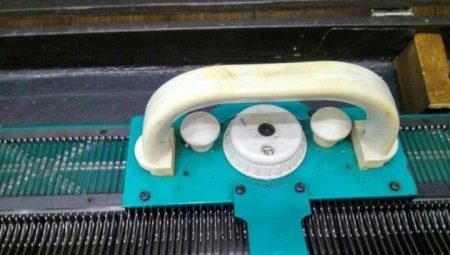
The Severyanka knitting machine was once very popular and was in high demand among Soviet housewives. The demand for the machine was explained by the absence of knitted clothes on the shelves of stores, as well as by the desire of the craftswomen to dress their families in high-quality and beautiful things.
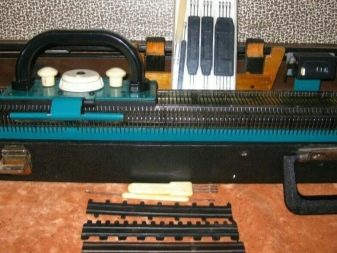
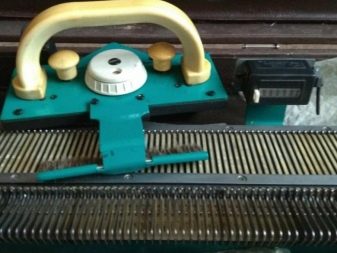
Specifications
The production of knitting machines "Severyanka" was carried out by the production association "Mostrikotazhmash", which produces equipment for light industry enterprises. The collection consists of only two models - Severyanka-1 and Severyanka-2... There are no fundamental differences between them, with the exception of a more improved carriage and an improved needle bar in a later sample. Both models have no software and are manually operated.
They belong to the 5th class, they have a simplified carriage, a row counter and a knitting density regulator. The design is complemented by special brushes, which are responsible for lifting the tongues of the needles. Severyanka-1 is equipped with 203 needles, while Severyanka-2 has 210 of them.
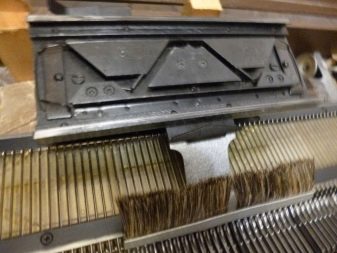
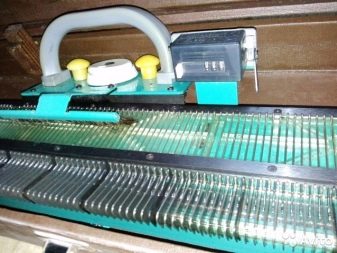
The design of the machine includes needle beds, consisting of 168 rows, with steel grooves located inside, designed to move the needles. The needle cushions have 2 rails each, which are necessary for attaching to the stand and sliding the carriage. The stands are made of sheet steel and equipped with rods with platinum springs.
Platinum, in turn, is represented by stamped parts with special grooves, which are the support for the needles when forming new loops. Along the plates there is a special guard, equipped with discs with hard rubber gaskets. The discs are designed to secure the threads before starting the knitting process.
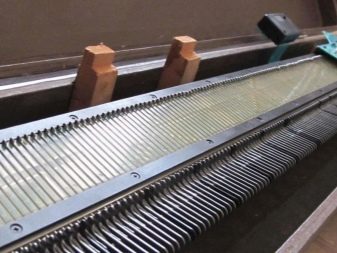
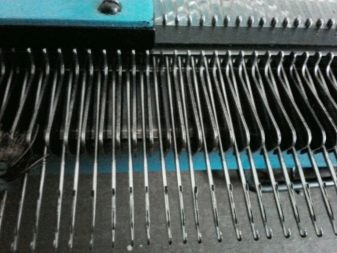
"Severyanka" belongs to the class of 1-fountain machines and is intended for knitting knitwear with crochet stitching and knitting simple patterns. In terms of its functionality and quality of knitting, the machine is significantly inferior to modern automated samples, but it costs much less and is quite suitable for novice craftswomen. The machines were produced in sizes 108x14x6 cm, which allows them to work in small apartments.
Knitting on "Severyanka" can be carried out with pure-woolen, semi-woolen, cotton and synthetic yarns with linear density from 200 to 350 tex.

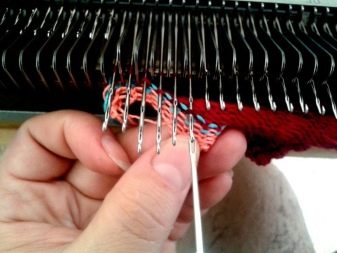
Advantages and disadvantages
Despite its advanced age, "Severyanka" is still preserved in many families and is actively used for knitting things. The popularity of the model is due to a number of positive qualities that distinguish it from other machines of that time.
- The machine is very easy to use and does not require any special skills.
- Longer design on the machine, you can simultaneously knit several small things at once.
- "Severyanka" is a versatile device. She is able to knit not only large items, but also items such as mittens and socks.
- Low price favorably distinguishes the machine from expensive analogs and makes it accessible to the general public.
- Despite the simplified design of the carriage, the machine is quite suitable for knitting multi-color canvases decorated with a pattern or ornament.
Along with the obvious advantages, the "Severyanka" still has its disadvantages. These include noise during operation, low functionality of the carriage and the need for constant monitoring of the position of the reeds in order to avoid skipping loops.
In addition, the appearance of the unit hardly fits into the modern interior and looks rather old-fashioned.
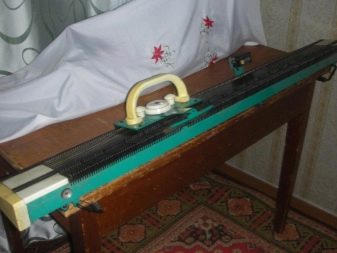
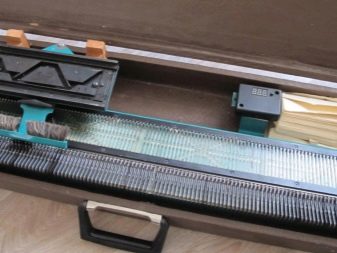
User manual
Each model of "Severyanka" was equipped with instructions for use, but in the 40 years that have passed since the release of the first sample, most of them have been irretrievably lost. In this regard, beginner craftswomen often have difficulties in mastering the knitting technique, especially with the formation of the first row. Below is an algorithm of actions that will help you understand the principle of operation of the machine and link your first product.
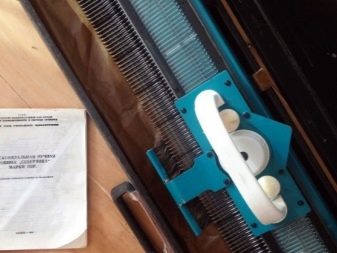
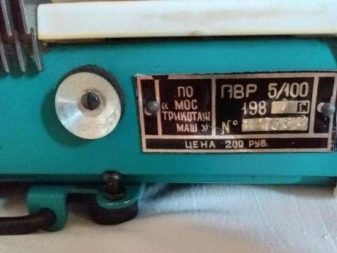
- To tie the first row, using a comb set the required number of needles, setting the knitting density regulator to the minimum value.
- The carriage is idled 2 times, thereby pushing the tongues of the needles.
- A slightly stretched thread is lowered onto the needles, after which, holding the carriage with one hand, they pass from left to right.
- Previously unused needles translated into working position.
- Under the platinum hooklocated on the right side of the machine at the first needle, thread is passed.
- The working needles are moved to position B or D depending on the desired pattern, not forgetting that in position A, the loops will not be tied, since they are blocked.
- The working hinges slide forward and open. At the same time, the thread is laid along the edge, after which the tongues are lowered.
- The carriage is carried from right to left, thus returning it to its original position. Then the quality of the first linked row is checked.
- The knitting density regulator is set to the desired position in accordance with the thickness of the yarn. Then they continue to work in the same way.
- In order not to lose track of the rows, use the built-in counter.
- If the loops need to be cut, then with the help of a decker, the extreme loops are combined and knitted together.
- If, on the contrary, you need to add new loops, then thread a thread under the tongue of the needle and carry it out with a carriage. The lower edge of the new loop is weighted down, otherwise the loop will not be tied when forming the next row.
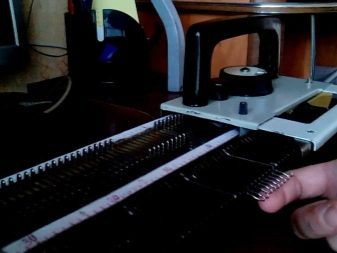
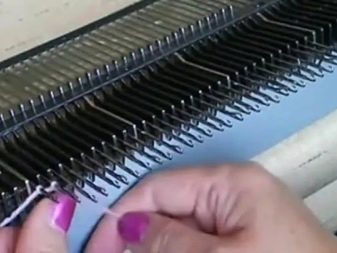
Separately, it should be said about the density of knitting, on which the appearance and quality of the knitted fabric depend. The density regulator is a scale with a wheel and applied numbers and risks.When you switch the regulator, the length of the loops changes, which affects the density of the knitting.
For each type of thread, its own value is optimal. For example, when knitting with thin threads (400 m / 100 g), the knob should be in the "0" position, while when working with very thick yarns (200 m / 100 g) it can be safely set to "10". When knitting thick products, the carriage moves slowly, and the loops are difficult to knit.
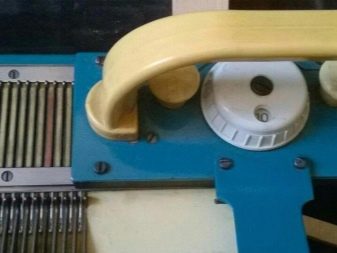
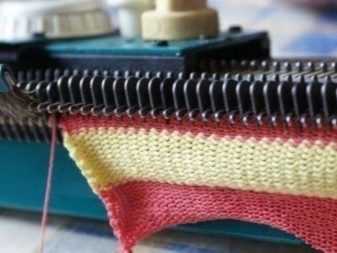
Frequent knitting problems are uneven stitches, thread slipping off the needle, varying heights of rows, and carriage tightening of the threads. Adjusting the knitting density and timely shifting of weights will help to eliminate them. To reduce the risk of the hinges slipping off, the load should be positioned as close to the needles as possible.
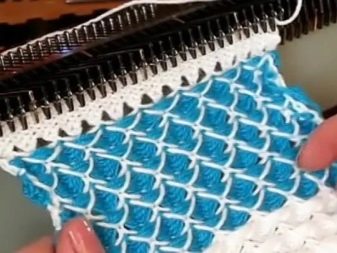

An equally common malfunction is damage to the needle, or rather, its tongue. As a result, the loop put on the faulty needle is not knitted, leading to the accumulation of a large number of threads on the needle. In order to fix the problem, you need two screwdrivers and a new needle. Using one of the screwdrivers, unscrew the screws that fix the clamping bar located above the needles. In this case, both screws are unscrewed, located from the needle on both sides.
A second screwdriver is inserted between the needle bar and the pressure bar so that the damaged needle can be reached. Then they put a spare in its place and put the screws in place. Next, the ease of sliding of the carriage on the rail is checked, after which the fasteners are pulled. It often happens that spare needles have run out long ago, and a broken needle requires urgent replacement. In such cases, take a whole needle from the edge of the needle bar.
It should be borne in mind that it is not recommended to use mohair and other fleecy yarns when knitting at Severyanka.
Otherwise, the machine begins to tighten the thread, skip loops and knit an uneven fabric. This is due to the fact that the long pile gets tangled in the needles, interfering with the full operation of the machine. However, not all fluffy yarns will interfere with the machine. Experienced craftswomen claim that an excellent canvas is obtained from angora (rabbit fluff) and alpaca (llama wool).
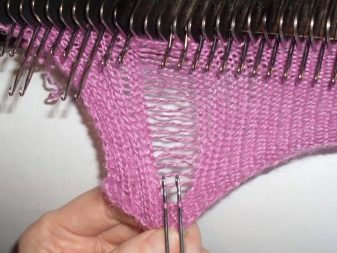
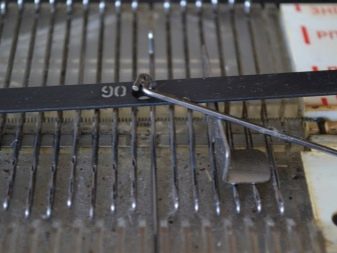
Care rules
Knitting machines "Severyanka" - the units are quite old, therefore, they need to be monitored to prolong their life.
- With regular use, the machine needs frequent lubrication, which is applied to the clamping bar and evenly distributed using the carriage.
- After a long period of inactivity, the machine needs to be cleaned. To do this, the grooves are well cleaned from fluff and dust, after which the unit is lubricated with household clarified oil.
- Under no circumstances should the carriage be lubricated with paraffin. An easy move over time will result in the failure of the part.
- If the machine is not planned to be used in the near future, it should be wiped with a dry, clean cloth and put into the cover.
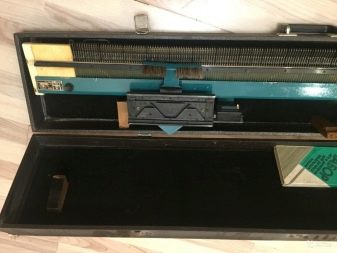
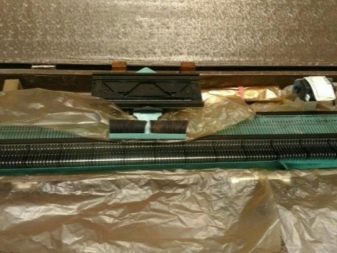
Then watch the video with tips on how to type the first row on the Severyanka single-loop knitting machine.








